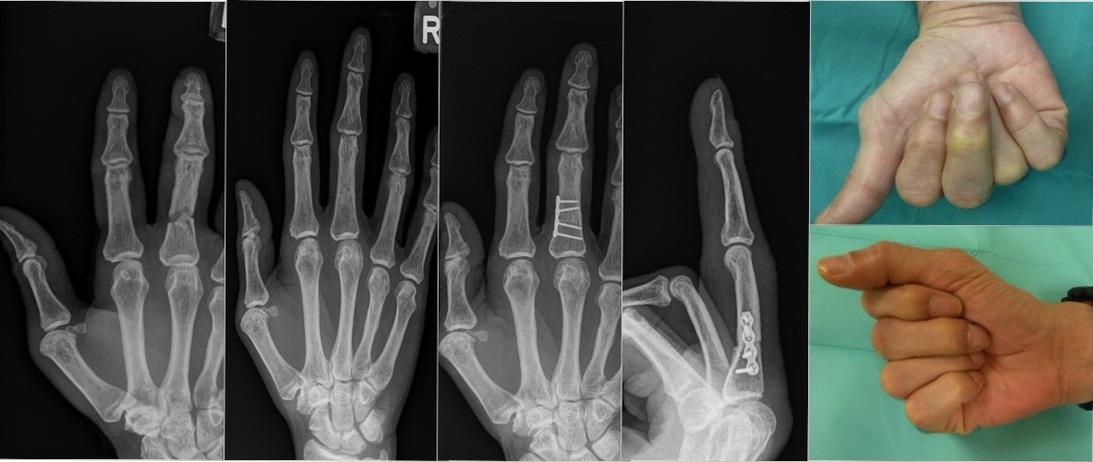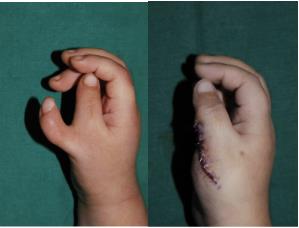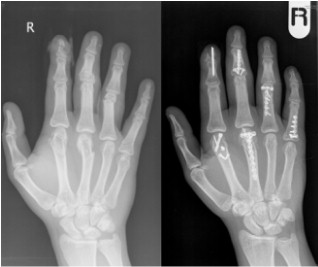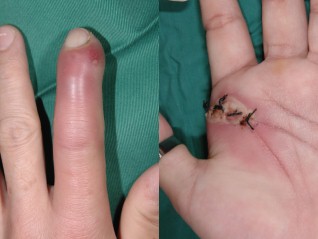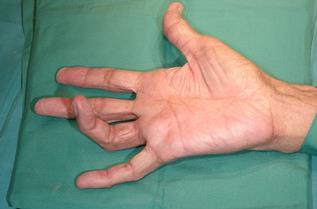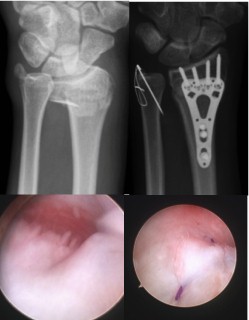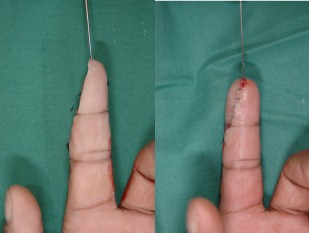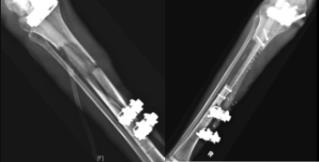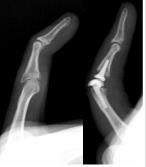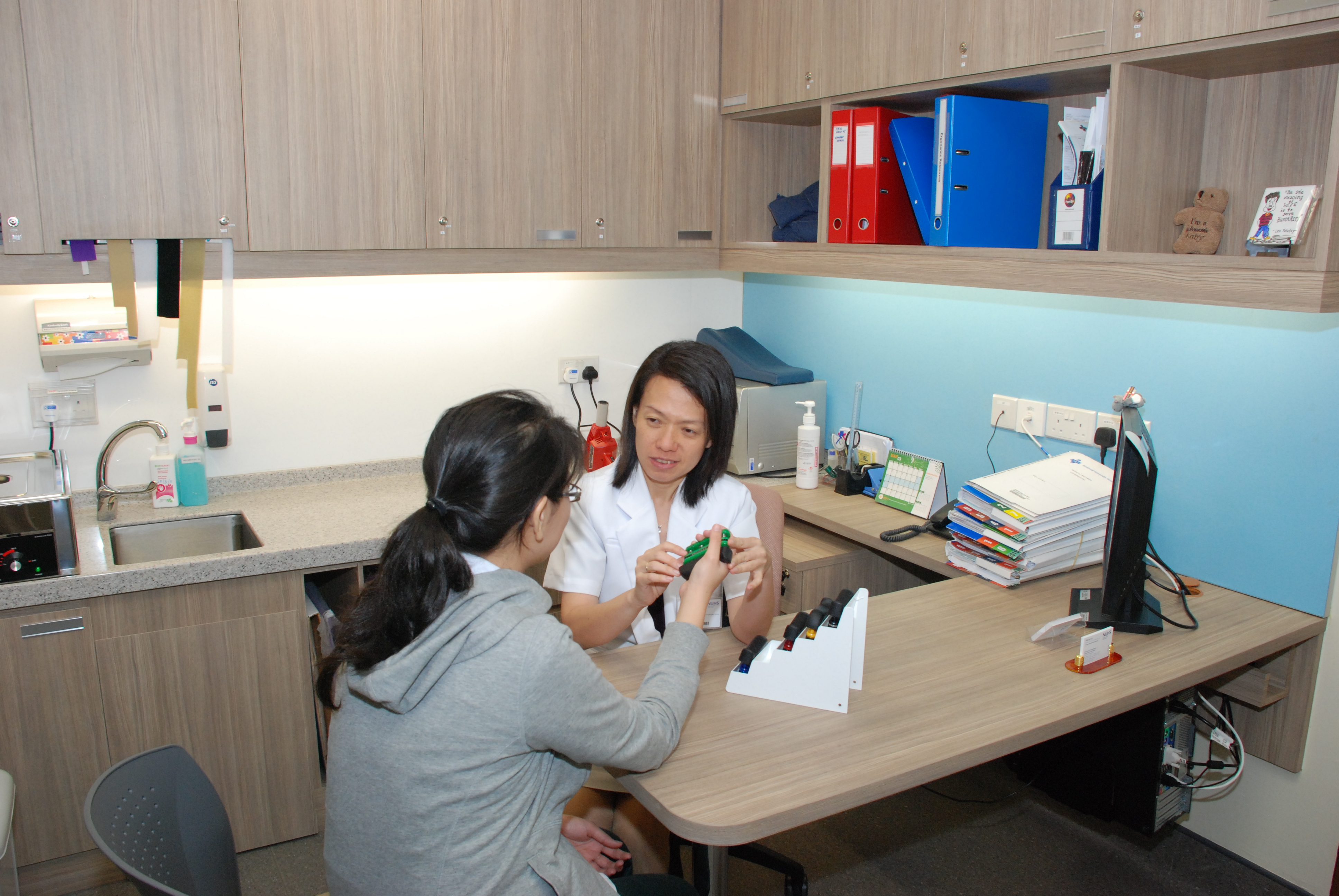We specialise in custom-fabricated silicone upper limb prostheses. A prosthesis serves as an artificial replacement of a missing body part, and individuals with amputated hands can benefit from the fitting of prostheses. By restoring lost length and span, a prosthesis enhances hand function, allowing opposition with (i.e., work against) the remaining parts. Moreover, prostheses augment the functional outcomes of surgical reconstructions.
The range of prostheses we provide includes:
- cap-type / thimble prosthesis
- finger prosthesis
- hand prosthesis
- below-elbow prosthesis
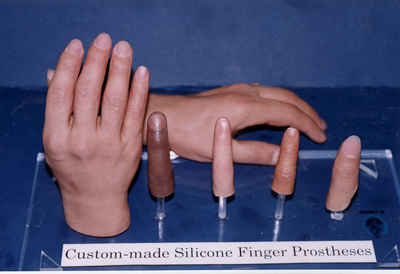
Every prosthesis fitted at our Prosthetic Hand Clinic is custom-moulded from medical-grade silicone rubber to ensure a biocompatible, comfortable and secure fit for the wearer. By using a layering technique in the moulding process, we can achieve colour-matching to produce prostheses with a life-like appearance that closely matchthe patient’s skin tone.
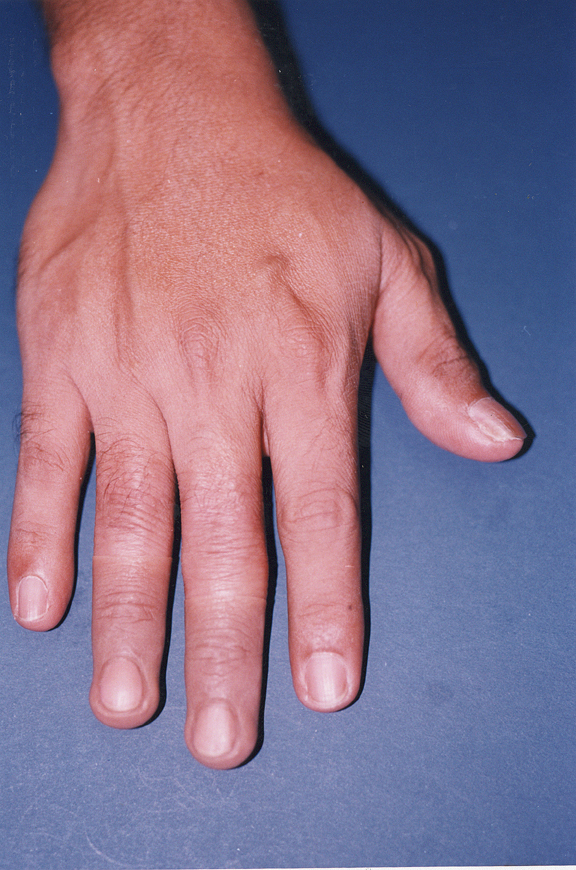
Following the amputation of the right middle and ring fingertips, the patient underwent fitting with a thimble/cap-type prosthesis. The edges of the prostheses were crafted to be thin and translucent to blend in with the surrounding skin.
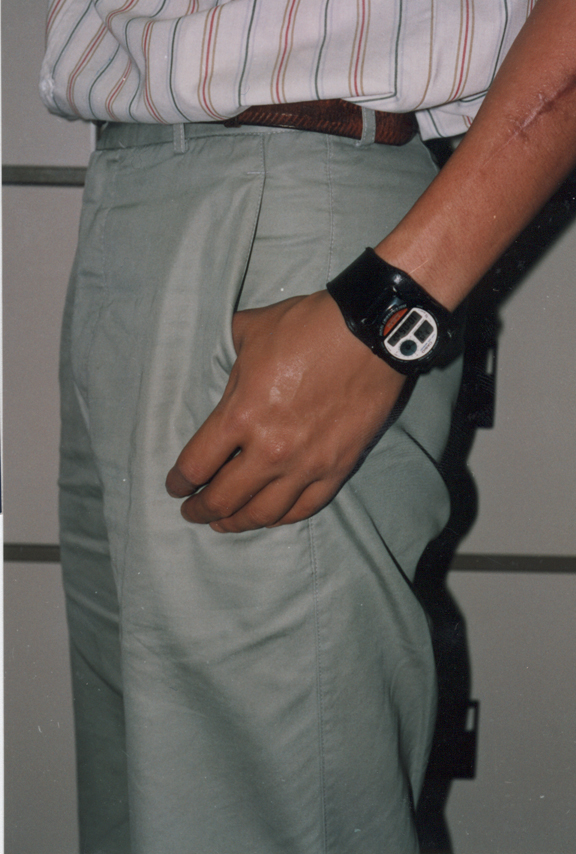
A patient fitted with a custom-moulded hand prosthesis on the left amputated hand. The edge of the prosthesis can be concealed by wearing a watch or wrist band.
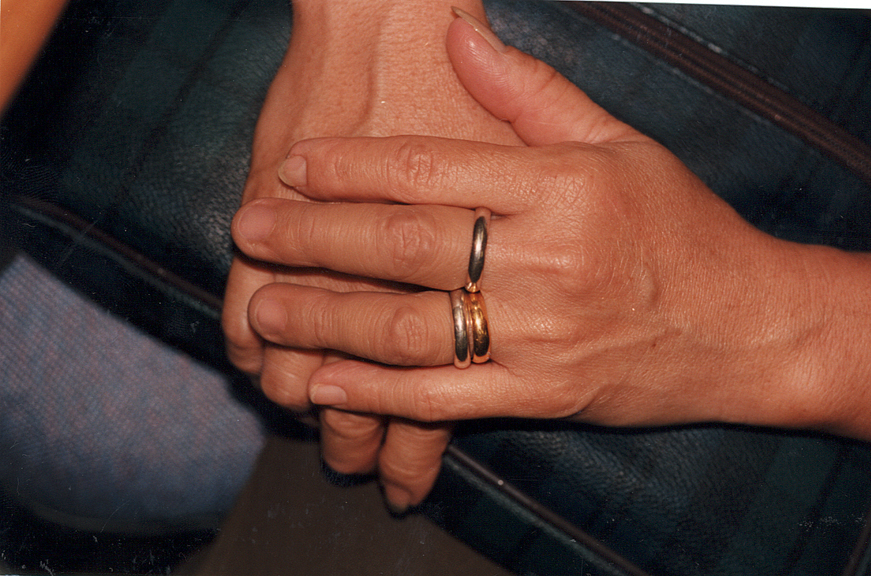
A patient fitted with custom-moulded finger prosthesis on the left amputated middle and ring fingers.
The edge of the prosthesis is concealed by wearing a ring.
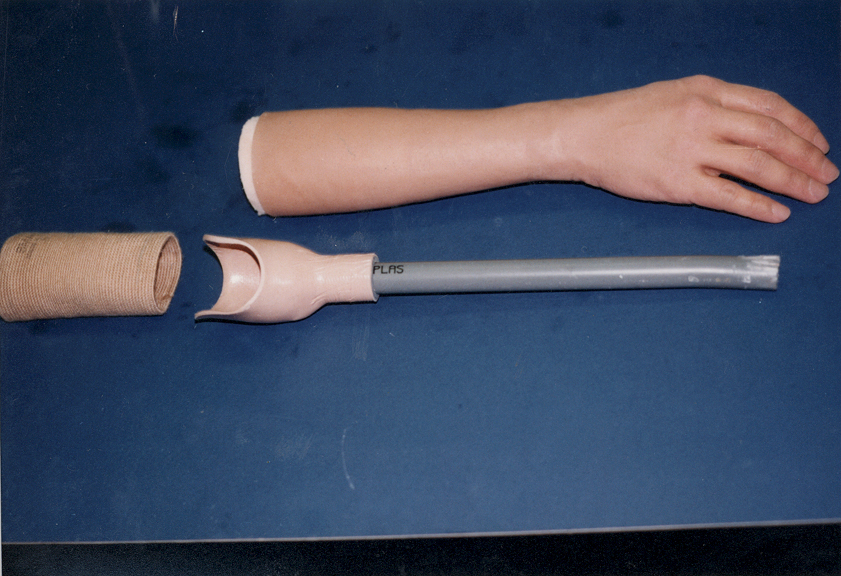
The components of a lightweight transradial (below-elbow) prosthesis.
All prospective patients are required to attend a pre-fitting clinic to assess their suitability for prosthetic fitting, taking into consideration the physical conditions of the stump as well as the patient's expectations.
Candidates for finger prostheses should have:
Well-healed stump(s) free from edema
Residual stump length(s) of more than 1.5 cm from the web spaces
Well-aligned stump(s) which is not overly bulbous or tapered distally
Partial hand amputations are more complex and require evaluation on a case-by-case basis due to the variability of the residual stumps. Generally, the residual hand/stump must be well-healed, pain-free and not overly bulky. Patients may be advised to wait for the stump swelling to subside before proceeding with prosthesis fitting.
Overseas patients are encouraged to provide digital close-up images of their hand (both right and left hands taken together) to assess prosthesis fitting feasibility before travelling to Singapore. Alternatively, hard copies may be mailed to the contact address below. If surgical revision is required to adjust the stump for prosthesis fitting, it is preferable to undergo the procedure in the patient’s home country where clinical expertise is available.
Prospective patients should maintain realistic expectations regarding the purpose and outcome of prosthesis fitting. The primary aim of fitting custom-moulded silicone prostheses is to restore loss of length and appearance of the hand, rendering the defect less noticeable, rather than restoring the injured hand to its original level of function.
Time Needed to Complete a Prosthetic
First-time patients are required to attend the prosthetic clinic in person to achieve a good colour match and optimum prosthetic fit. Subsequent replacements may be mail-ordered.
Fitting finger prostheses takes five working days, so a week-long stay is recommended. For partial and full hand cases, a longer stay of 8-10 days, depending on the complexity, is required.
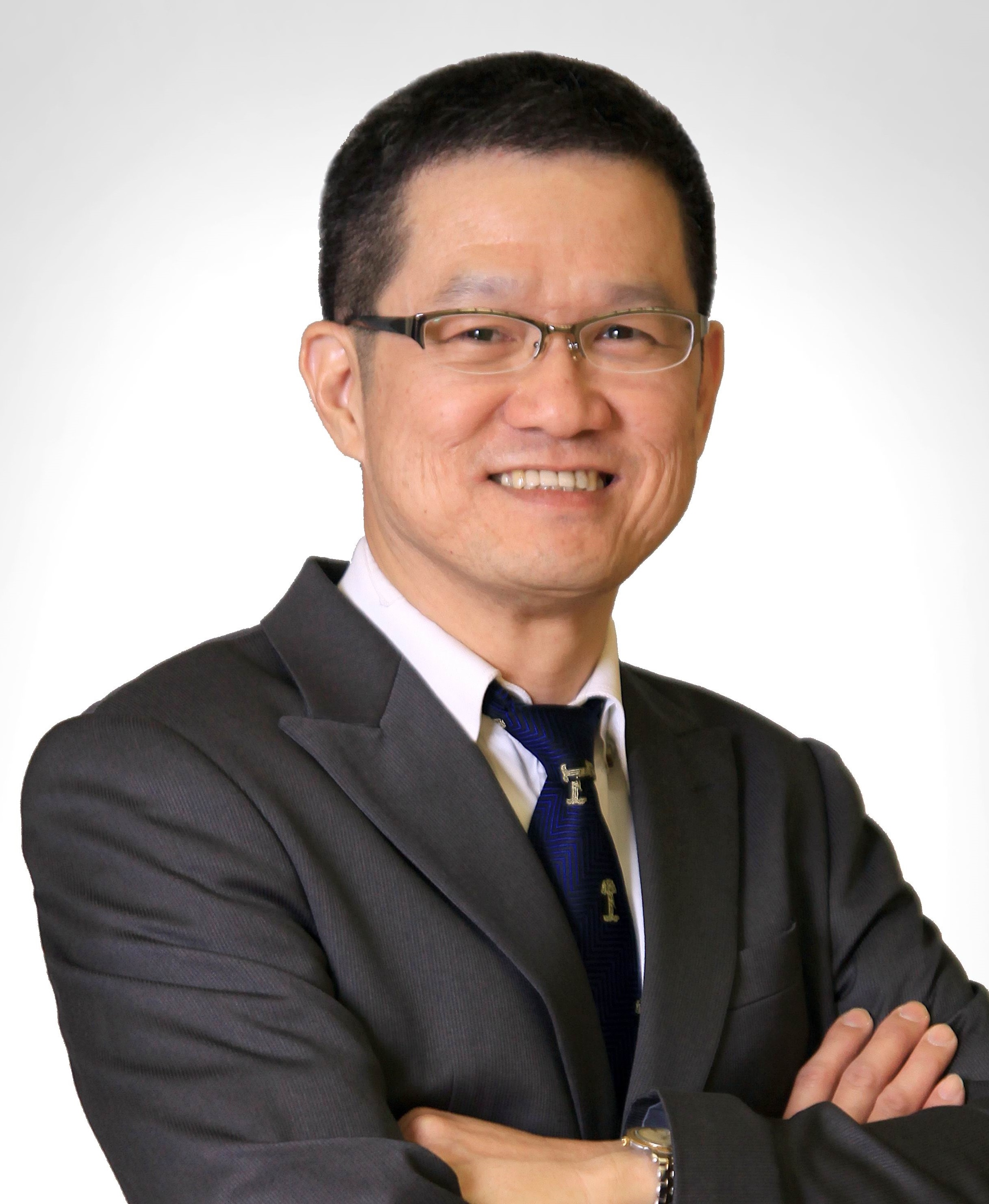
Chief Prosthetist
Mr Michael EL Leow
Mr Michael Leow oversees the Department's Prosthethic Services. He obtained his Master of Science degree in 1995 and completed further specialised training at the renowned Northwestern University Prosthetic-Orthotic Center in Chicago in 1996. With over 30 years of experience, he specilises in producing and fitting custom-moulded silicone prostheses for patients with hand and finger amputations. Mr Leow has served as an invited reviewer for the journal Prosthetics Orthotics International. His research focuses on the fabrication and fitting of silicone prostheses. He has published numerous papers on the topic in international scientific journals. In recognition of his contributions to prosthetic research, he was awarded the NUHS Model Allied Health Professional Award (Research Contribution) in 2014.
For appointment and enquiry, please contact:
Hand & Reconstructive Microsurgery Centre
NUH Main Building, Zone F, Level 2, F02-01
Tel: 6772 5599
Special Feature on Straits Times

